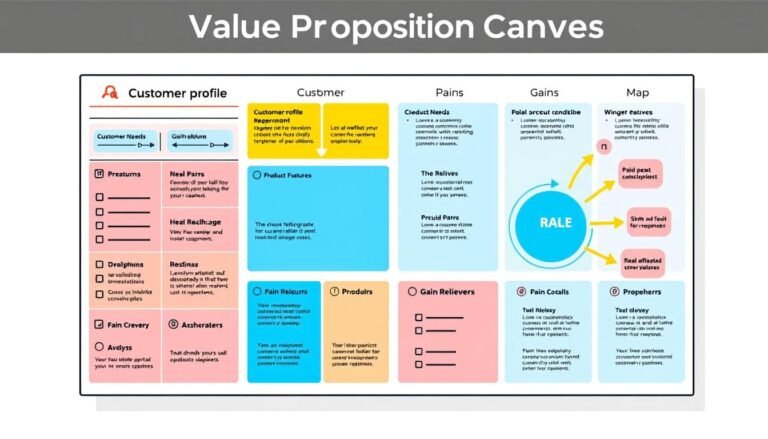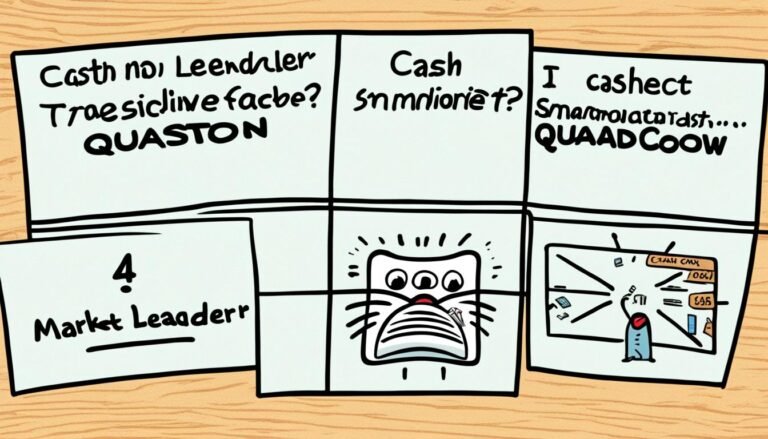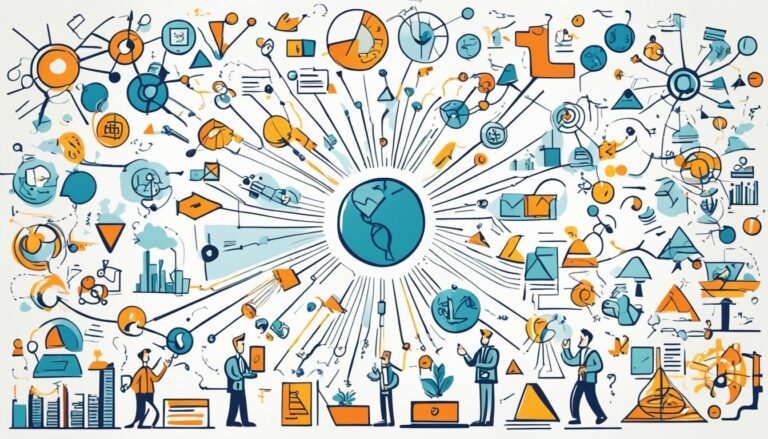Unlocking Value: Resource-Based View (RBV) Explained
Ever wondered why some companies always do better, even when the competition is tough? It might be because of the Resource-Based View (RBV). This key strategy idea looks at what’s inside a company. It says that what a company has inside is what sets it apart.
It started in the 1980s with thinkers like B. Wernerfelt and C.K. Prahalad. They showed how important it is to use what you have well. By using the RBV, companies can stay ahead in a world that’s always changing.
Key Takeaways
- The RBV framework focuses on leveraging internal resources to gain a competitive edge.
- Over 72% of research emphasizes the importance of strategic assets in generating organizational rent.
- Companies like Apple and Netflix have utilized valuable resources to achieve sustainable competitive advantages.
- The VRIO framework identifies criteria for resources that can ensure sustained competitive advantage.
- Organizational culture and human resource practices play a vital role in maximizing resource potential.
Understanding the Resource-Based View (RBV)
The Resource-Based View (RBV) helps us see how companies can stay ahead. It says that what’s inside a company is key to its success. We’ll explore what RBV is, its history, and why internal resources matter.
Definition of RBV
The RBV says a company’s strength comes from its unique resources and skills. These can be things like money or brand names. When companies use these resources well, they can beat others, even if the market is the same.
Historical Background and Development
The RBV started to be popular in the late 1980s and 1990s. Famous thinkers like Birger Wernerfelt and Gary Hamel helped spread the idea. Jay Barney’s 1991 paper made it even more popular.
In the 1990s, RBV became a big idea in strategy, challenging old views that focused on outside factors. It brought us the VRIO model. This model looks at resources based on their value, rarity, imitability, and support within the company. It explains what makes resources special and lasting.
The Importance of Internal Resources
Internal resources are crucial for a company’s success. They help with innovation, doing things efficiently, and winning in the market. Things like brand names and knowledge give companies an edge.
Using these special resources well can lead to more profits and a strong market position. This lets companies offer more value than others.
Key Components of the RBV Framework
The Resource-Based View (RBV) framework looks at how an organization’s unique resources and capabilities lead to better performance and a competitive edge. It divides resources into tangible and intangible assets. This helps us see how companies can use their strengths to beat their competitors.
Tangible vs. Intangible Assets
In the RBV approach, resources are split into tangible and intangible assets. Tangible assets are things you can touch like machines, technology, money, and buildings. Intangible assets are things you can’t touch, like a brand’s reputation, patents, and company culture. While tangible assets help with day-to-day work, intangible assets often give a lasting edge because they’re hard to copy.
The RBV model shows how important intangible assets are. Companies with strong brands can pull in and keep customers better than just having physical stuff. For example, Apple and Samsung use their unique mix of resources to keep customers coming back and get higher values in the market. This mix of resources is key to standing out in any field.
Organizational Capabilities and Competencies
At the heart of the RBV is how well a company uses its resources. Having special skills lets businesses meet market needs, add value, and stay ahead. Skills like solving problems in new ways, managing processes well, and coming up with unique marketing plans help use resources well. This way of using skills helps create lasting value and keeps a company in a strong position.
The RBV also stresses the need to use resources wisely. Good management uses both physical and non-physical assets to adjust to market changes and meet goals. For example, teams that are good at working together and using data fast can do better. In a world where technology changes fast, focusing on these skills is key to staying successful.
| Asset Type | Examples | Competitive Advantage Contribution |
|---|---|---|
| Tangible Assets | Machinery, Land, Capital | Enhances operational efficiency and capacity |
| Intangible Assets | Brand Reputation, Intellectual Property | Differentiates products/services, builds customer loyalty |
| Organizational Capabilities | Innovative Problem-Solving, Efficient Process Management | Enables effective resource utilization, fosters long-term growth |
Benefits of Implementing the RBV Strategy
The Resource-Based View (RBV) strategy brings big benefits for long-term success. It helps companies use their internal resources to stand out in the market. This includes getting a sustainable edge, making better decisions, and encouraging innovation and flexibility.
Achieving Sustainable Competitive Advantage
Using the RBV framework helps companies gain a lasting competitive edge. They focus on their unique strengths and make offerings that others can’t easily copy. This makes them strong in the market and keeps customers coming back, giving them an edge in fast-changing markets.
Enhancing Resource Allocation and Decision Making
A strong RBV strategy lets managers use resources wisely, making better decisions on where to use them. This makes operations more profitable and projects more successful. It also makes an organization more effective and improves how it makes decisions.
Encouraging Innovation and Adaptability
Companies that follow the RBV framework value innovation and flexibility. They match their resources with what the market needs, so they can quickly adapt to changes. This keeps them ahead by using their assets in new ways, grabbing new chances and staying ahead.
Resource-Based View (RBV) and Its Relevance in Strategic Management
The Resource-Based View (RBV) is key in strategic management. It helps firms see their strengths and weaknesses. By looking at what makes a company special, leaders can make smart choices to stay ahead.
Analysis of Competitive Strengths and Weaknesses
RBV analysis helps firms check out their own strengths and see how they stack up against others. They can spot what makes them stand out, like special tech or a great work culture. For example, British Airways uses its big assets worth £8.2 billion to stay competitive in the airline world.
On the other hand, Southwest Airlines does well by having happy employees and a culture that keeps them ahead of problems. This puts them in a good spot in the market.
Integration with Other Strategic Management Models
The RBV can work well with other strategies, making planning better. By mixing it with SWOT analysis and Porter’s Five Forces, companies get a full picture of their competition. Toyota, for instance, uses its unique skills and other strategies to stay competitive.
This mix helps firms look at their resources and the market from different angles. It makes sure they don’t miss anything important.
| Company | Competitive Strengths | Potential Weaknesses |
|---|---|---|
| British Airways | Strong tangible assets, global reach | High operational costs |
| Toyota | Innovative manufacturing techniques, reputation for quality | Dependence on conventional vehicle sales |
| Southwest Airlines | Strong employee culture, consistent profitability | Limited international reach |
| Apple | Strong brand loyalty, innovative product design | High competition in tech market |
Using RBV in strategy helps firms see what they’re good at and what they’re not. This lets them keep up and do well in a changing market.
Challenges and Limitations of the RBV Approach
The Resource-Based View (RBV) theory helps us see how resources can lead to a competitive edge. Yet, it faces challenges, especially in today’s fast-changing markets.
Resource Scarcity and Dependency Issues
Companies often struggle with not having enough resources. This limits their ability to get the assets they need. They might rely too much on others, which can be risky.
This makes it hard to make quick decisions and adapt to new market trends. Companies must negotiate with suppliers and partners to get what they need. This can slow down their ability to react to changes.
Addressing Market Dynamism and Resource Rigidities
Markets change fast, and some resources can’t easily adapt. Being able to change is key to staying competitive. Fixed assets might not keep up with new demands.
Knowing when to use what you have and when to look for new resources is crucial. Companies must balance using what they have with finding new assets. This helps them stay flexible and relevant in a changing world.
Conclusion
The Resource-Based View (RBV) offers a strong way for companies to boost their competitive edge. It shows how using both physical and intangible resources can give firms unique benefits. These benefits are hard for others to copy. This idea is key for companies wanting to succeed in today’s fast-paced markets.
Understanding and using the VRIN framework helps companies improve. VRIN stands for valuability, rarity, inimitability, and non-substitutability. This approach helps companies use their resources well, leading to lasting competitive advantages. In fields like healthcare, where knowledge and flexibility are crucial, this is especially important for innovation and solving new problems.
Success with the RBV approach depends on a strategy that uses current resources and encourages ongoing improvement. As companies change over time, paying attention to these factors is crucial. It affects their long-term success and ability to stay competitive.
Source Links
- No title found
- Resource based view strategy: Unlocking Competitive Advantage: Resource based View Strategy for Entrepreneurs – FasterCapital
- What is the resource-based view?
- Using Resource-based View Strategy for Competitive Advantage
- All You Need to Know About Resource-Based View
- Resource-based view
- Exploring the Resource-Based View and VRIN Framework to Achieve Competitive Advantage
- Resource Based View (RBV)
- Using the Resource-based View Strategy for a Competitive Advantage
- Cracking the Code: Strategy Demystified through the Resource-Based View
- Resource-Based View
- Resource Based View: A Powerful Framework for Creating Organizational Competence
- Resource Based View (RBV) and Sustainable Competitive Advantage – MBA Knowledge Base
- 4.3 Resource-Based View
- A scientific critique of the resource-base view (RBV) in strategy theory, with competence-based remedies for the RBV’s conceptual deficiencies and logic problems
- The Impact of Resource-Based View on Strategic Management in Organizations
- Leveraging Resource-Based View (RBV) Framework for Sustainable Competitive Advantage
- Resource based view: a promising new theory for healthcare organizations: Comment on "Resource based view of the firm as a theoretical lens on the organisational consequences of quality improvement"
- Resource-Based Theory – TheoryHub – Academic theories reviews for research and T&L







